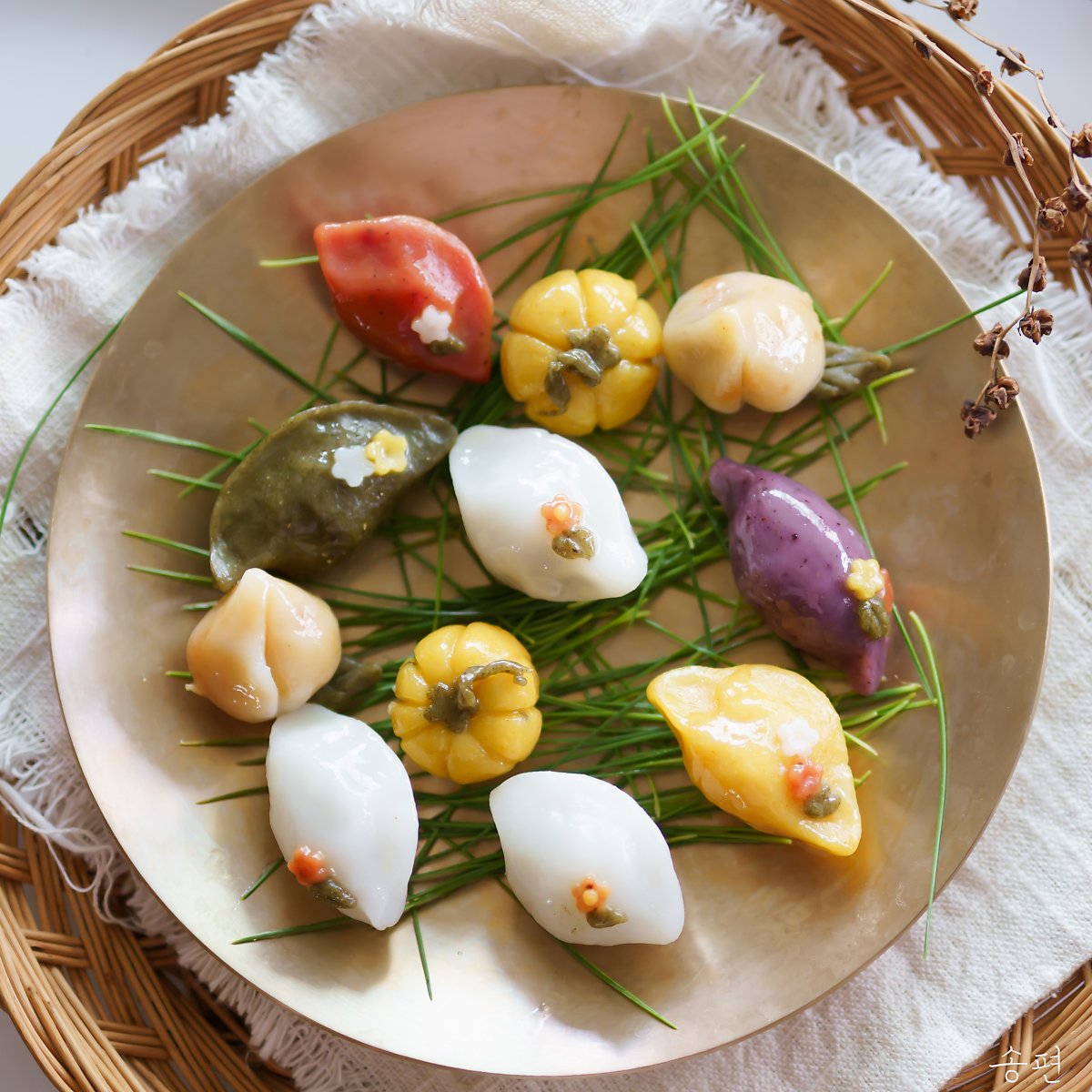Chuseok 추석 is just around the corner, and this year we’re highlighting its one and only signature dish: songpyeon 송편. Often called the Korean Thanksgiving, Chuseok is a mid-autumn harvest festival celebrated in South Korea with a restful 3-day break from the bustling and face-paced life. It’s a time to gather with family and relatives to enjoy home-cooked dishes and traditional games, but one custom you absolutely cannot go without is eating (and sometimes making) songpyeon, traditional Korean rice cake.

History of Songpyeon
Songpyeon that is eaten during Chuseok is referred as oryeo songpyeon (오려송편) because traditionally songpyeon was made from early-ripened rice (or oryeo). Historically, songpyeon was served in place of rice as the main dish during Chuseok meals. It is noted that songpyeon-making became more widely known during the Goryeo dynasty. This was such a significant dish that families even shared this sweet delicacy with their servants to encourage them to work hard through the next harvest.

Songpyeon from different regions
The most commonly seen songpyeon are the half-moon and short-necked clam shapes, but various regions of Korea have their signature songpyeon. The Gyeongbuk area is known to have a rounded UFO-like shape; Jeju songpyeon are flat with round edges; and the Gangwon songpyeon have finger imprints.

Songpyeon’s shape originates from the time of the Three Kingdoms of Korea. The story goes that one day, King Uija of the Baekje Kingdom had seen a turtle come out from the palace grounds. The turtle’s back read “Baekje is a full moon, Silla is a half moon.” This was interpreted that Baekje was soon to fall because it had reached its fullness, like the full moon, and Silla would rise just as the half moon would expand into a full moon. The people of Silla heard of this interpretation and began making songpyeon in the shape of a half-moon in hopes of prosperity.

Eventually Silla achieved unification, and the people continued to make songpyeon with the belief that if you eat half-moon shaped songpyeon, your wishes would come true.

Fun fact: “A woman who makes pretty songpyeon will meet a good husband, and a pregnant woman who makes pretty songpyeon will give birth to a pretty daughter.”
So, how is songpyeon made?

Songpyeon is made from non-glutinous rice flour that is kneaded in hot water. Traditionally, ingredients such as taro, mugwort, and pine tree bark were used to produce colorful songpyeon. Each rice cake is filled with various ingredients such as red beans, chestnuts, mung beans, crushed sesame seeds, or powdered soybeans that are sweetened with honey or sugar. These bite-sized rice cakes are then steamed on a bed of pine needles, which prevent the cakes from sticking together and add a subtle aroma. Today, modern songpyeon takes on different shapes such as pumpkins, flowers, and apples and uses different ingredients that produce a wider range of beautiful colors.

Enjoy this weekend by celebrating Chuseok with some homemade or store bought songpyeon. You can find these traditional rice cakes at your local Korean market.




1 comment
learned so much! love how informative the blog was
Leave a comment